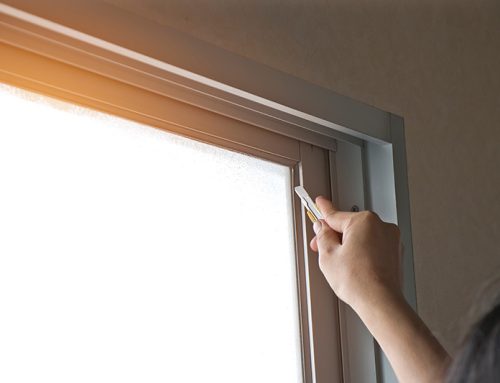The subject of light pollution is being talked about now, more than ever.
Many of us are seeking ways to make our properties more environmentally friendly, tackling the negative effects of human-induced climate change caused by greenhouse gas emissions, and you can read more about the greener aspects of Window Films here.
But alongside pollution caused by greenhouse gases, there is another pervasive form of environmental degradation that society is far less aware of, and which Window Films can address: light pollution.
And unlike the emission of greenhouse gases, light pollution can be solely attributed to human activity; an ecosystem without any human contact would not experience any natural sources of light pollution.
So, what is light pollution, and why is it so damaging?
Light pollution and its effects
Put simply, light pollution is the emission of light into the environment.
In nature, this rarely occurs, but artificial lighting is of huge benefit to human society, extending the hours in which both work and leisure activities can be undertaken, particularly in the winter months.
However, excessive light emission can negatively impact both humans and wildlife, and this is only set to increase as the human population grows.
There are unique challenges presented by light pollution in both urban and rural environments.
Light pollution in cities
In 2015 the Government Office for Science predicted that all 63 cities in the UK would see population growth before 2036, and it’s certainly obvious when visiting cities in the country that there are more and more houses and flats being built to house the predicted influx of people.
Along with a higher density of houses comes a higher density of artificial lighting, and whilst some appreciate the buzz of the bright lights in a big city, it can negatively affect human health.
Overexposure to light during the night disrupts the internal 24-hour cycle in the human body known as the circadian clock, which our physiological processes are guided by.
When this circadian rhythm is thrown off, the disruption has been linked to various health issues including depression, insomnia, cardiovascular disease, and cancer.
These health effects come alongside the obvious effects of light on sleep, which is much harder when our environment is too brightly lit, often as a result of light trespass where light from one building shines into another.
Over-illumination of areas also causes ‘sky glow’, the visible halo of light which can be seen when observing a city at nighttime; you may have experienced how difficult it is to see the stars in urban areas, and this is because of the artificial light making it so much harder.
It’s not hard to understand how higher and higher densities of buildings creating light pollution means that cities are becoming even more of a glowing beacon on the skyline.
But what about rural areas?
Light pollution in rural areas
It’s easy to assume that light pollution is only problematic in more developed areas, but the effects on rural areas where the environment is usually much darker are incredibly disruptive.
In the wild, both animals and plants are adapted to survive and thrive by being finely attuned to every aspect of their environment, be it access to food sources, temperature fluctuations, light levels, or a countless number of other factors.
When one of these environmental factors is altered, their survival is threatened, as their way of life can’t continue.
The effects of light pollution on delicate ecosystems is particularly noticeable in rural areas.
Nocturnal animals no longer reproduce or hunt as they would normally do when the rhythms of light and dark are thrown off.
When one species is affected, this has indirect effects on the others which are dependent on it, either as predator or prey.
One particular impact of light pollution on UK wildlife is on bats, which are incredibly important to ecosystems in our country.
Studies have found that bats are becoming less and less able to hunt and feed, as they normally emerge from their roosts when darkness falls, which is now prevented by artificial light.
How Window Films can help?
It’s clear that light pollution is a major issue in both urban and rural areas, but we can’t expect people to live in darkness.
In line with this, the Government now advise town and city planners to consider the how they can create communities which are well-lit, but limit the negative impacts of light pollution on the environment.
They are encouraged to reduce the amount of artificial light which is emitted from buildings, and one way which this can be achieved is through the installation of Window Films.
Sureguard Window Films® reduce light transmission, providing a working solution to the problem of light pollution; you can continue to have a well-lit home which enables you to use your home when it’s dark outside, without releasing as much artificial light into the outside world.
As town and city planners consider construction guidelines which reduce light transmission from new buildings, some property owners are considering replacing existing window units with tinted ones to bring their buildings in line with the suggestions laid out by the Government.
But the installation of a Window Film is far less disruptive, has lower environmental costs associated with its production, and can be achieved at a fraction of the price of a replacement windowpane.
And as well as reducing light transmission from your property, Window Films also contribute to your green credentials by better insulating your home, lowering your reliance on greenhouse-gas emitting heating systems – which will also reduce your energy bills.
Contact us about reducing the light pollution of your property
At Sureguard Window Films® we would love to talk to you about how our Window Films can help your home or office building to reduce the effects of light pollution on the environment.
All of our Window Films can be supplied to a variety of specifications and tailored to your needs for security and privacy as well as light transmission.
Contact us today to speak to our team about your project, and together we can impact both ecological and human communities for the better.




